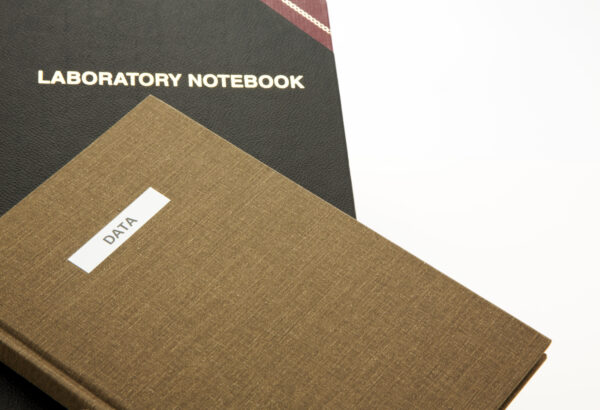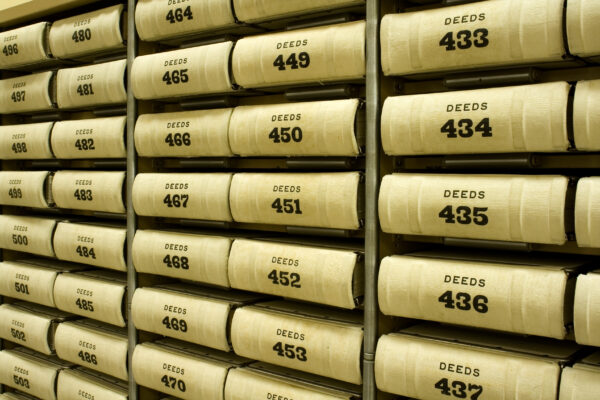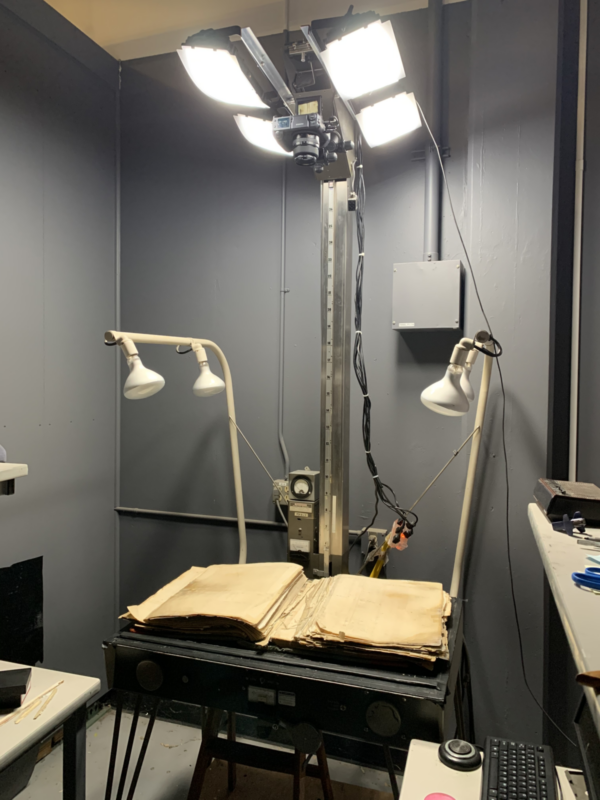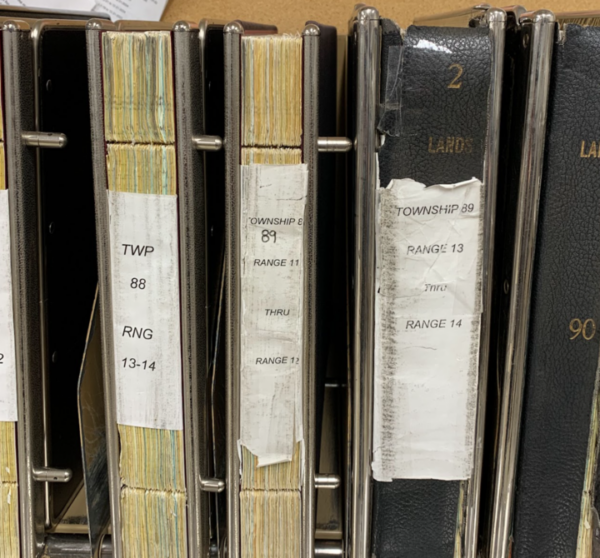Whether you’re trying to digitize a collection of local newspapers, a storage room of lab notebooks, or shelves full of deed books, you’ve found yourself in the world of book scanning.
Book scanning is under the umbrella of “paper scanning,” but there are some differences that make it unique to standard document scanning projects.
In this article we’ll define book scanning, describe the various types of books, discuss methods to scan books, offer benefits to scanning, and then cover the scanning process.
What Is Book Scanning?
Book scanning is exactly that – scanning books.
It might sound obvious, but it’s named as a specific type of scanning because books often need different scanners than, say, a box of records.

Types of Books
Books come in almost every shape and size you can imagine, but they generally fall into a few common categories. Standard books include things like lab notebooks, catalogs, magazines, instruction manuals, and yearbooks, while oversize books include larger records like official records, Sacramental Registries, maps, and newspapers.

The next important distinction is bound versus unbound. Bound books have a spine, and the pages are stuck together in some way, not already separated like you’d find in a folder of papers. With bound books, you typically have two options. The first is scanning the books as they are using an overhead scanner – because you can’t put the pages through a standard rotary or high-speed scanner. The second option is to disbind the books. This could mean cutting the binding with a guillotine or somehow removing the pages so they can be sent through a high-speed scanner.

Unbound books, on the other hand, can be taken apart easily so the pages can be scanned, potentially on high-speed scanners. Some folks, however, want unbound books captured in their original “book” state to show the historical context, which means using an overhead scanner.
Book Scanning Methods
In the case of bound books, using the overhead scanner is the primary option – unless you decide to let your scanning partner disbind the books through methods such as cutting or page removal. Yes, there is some “destruction” involved in this approach, but your partner will typically have experience with this and aim to minimize any data loss.
Some downsides to disbinding arise if the gutter (where the pages meet) is too tight and/or the words on the page are very close to the gutter. In this case, it can be tricky to disbind the pages without losing some context. However, if you choose to keep the pages bound, this very same problem might lead to data loss in the overhead scanning method. In these situations, your scanning partner will generally recommend options or provide examples of what one method might yield before you decide to move forward with disbinding or keeping the book as is.

The three most common ways to scan unbound books are using a high-speed scanner, an oversized scanner, or an overhead (or “planetary”) scanner. If the pages can easily be separated from the binding (such as Post Bound Books), sending them through a high-speed scanner is the most efficient option. In the digital conversion world, a high-speed scanner usually means a scanner that can take standard office-sized documents, typically up to 11 by 17 inches.

If the pages are larger than that – for example, engineering drawings – you’ll likely want to use an oversized scanner.
Finally, if you want to keep the book intact, even though it can be unbound and the pages scanned separately, the images can be captured using an overhead scanner. This way, you get the context of the book and keep it in its original format.
Benefits of Book Scanning
Just like standard scanning, book scanning has several key benefits. The first is preserving your historical records and data. If you’re working with book-form data, this is probably the primary copy of the documents you’re using. Preserving these historical records in digital form allows you to continue using the original copy while having a digital version that could enhance the accessibility and usability of those records.
Another (related) benefit is that digitizing means creating a backup for disaster recovery. Not only will you have an electronic format that can improve your research, you also have a digital copy in case the hard copy gets destroyed or damaged. You can’t predict accidents – they can be anything from a fire or flood to someone stealing a record. But having a digital backup ensures that you keep the documents, regardless of what happens to the original copy.

Finally, scanning your books makes them significantly more searchable. Once records are digitized, there’s no need to locate the record in some dusty storage facility, pull out the book, handle fragile documents, and then replace the record once you find what you need. With a digital version, you can quickly find the record via index or text search, save the document in a digital format, and move on. It’s faster, easier, and improves access.
Book Scanning Process
The standard process used for book scanning aligns with our project process for most digital conversion jobs, and it includes the following steps:
The first milestone, or “M1,” is the proof of concept phase, where we create your unique process flow based on the scope of work you’ve established with your sales rep. During this stage, we test a small batch of your project materials, which you’ll have the chance to review and approve.
Once we get your approval on the sample work, we move on to the preparation phase – getting the actual books ready for scanning. This might include disbinding some records as mentioned above, it could involve taping or fixing pages that have been damaged prior to the scanning project, and it might also involve organizing the records into particular document types to facilitate indexing.
Next is the scanning phase, the heart of the project. This is where we take digital images of the books and create the electronic records.
Following scanning, we move to the post-scan image processing phase. This can include steps such as framing the images, quality checks, adding OCR text search, and possibly indexing to various levels of your books, which could be book level, page level, or even box level if you’re working with large quantities of records.
Finally, there’s the delivery phase, which includes exporting your images to a USB drive or uploading them to our digital reel application for immediate access.
Next Steps
Reach out to us today! Click the “Get Your Quote” button below, fill out the form, and we’ll quickly reply to you to discuss your project.
Further Reading
Digital Indexing: Structured vs. Unstructured Data
Naming your digital files, or “indexing” them, is an essential part of any good digitization project. Learn about the two most common methods, unstructured and structured indexing, and how to implement them in your project.
How To Choose A Paper Scanning Partner
Having the right partner for your paper scanning project can determine the success of your project. However, the task of finding a partner can be daunting. Read our guide on things you should consider and questions you should ask when you’re searching for a partner, such as “what kind of technology do they have?” and “what kind of experience do they have on similar projects?”.
Scanning Large Format Documents
Scanning large format documents (such as building plans, engineering drawings, oversized books, and newspapers) requires specific methods of capture that goes beyond “normal” paper scanning. We’ll describe the different large format sheet sizes, scanning methods, and output options that you have available for your conversion project.

